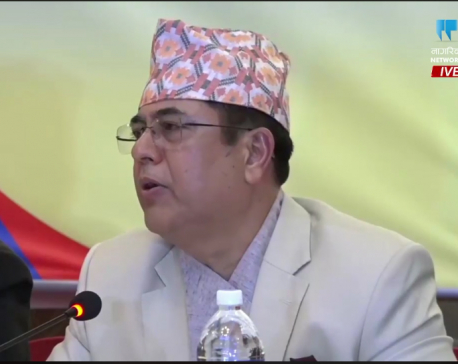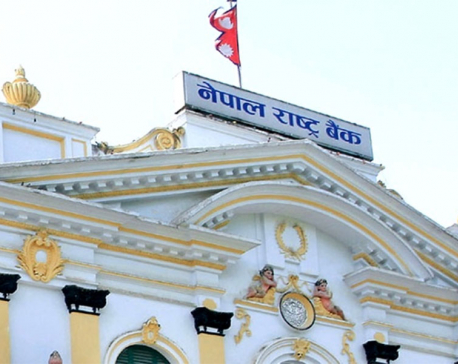
OR
#Monetary Policy 2022/23
New Monetary Policy is out. Here is how it is likely to impact you
Published On: July 26, 2022 09:09 AM NPT By: RAJESH KHANAL

Earlier last week, Nepal Rastra Bank (NRB) Governor Maha Prasad Adhikari announced the monetary policy for fiscal year 2022/23, a document everyone had pinned their hopes on, expecting it to come up with magical solutions for a number of problems facing the country, including the persistent liquidity problem and external sector stability. Economists have termed the policy as 'contractionary' as it seeks to control inflation through check in money supply. The policy will have profound impacts on different sectors of the economy. And, you will also not be immune to its effects.
Here is how you are likely to be affected by the new Monetary Policy:
Consumers:
As a consumer you are likely to be affected by the Monetary Policy in different ways. The NRB has adopted measures to reduce the aggregate demand which is considered one of the main factors to trigger consumer price inflation. For this purpose, the central bank has attempted to reduce money supply largely.
But on the other hand, the rise in interest rates is likely to trigger a cost-push inflation, making investments expensive for the private sector and goods and you as a consumer are likely to find goods and services costlier than before.
While the inflation has already crossed eight percent now, the NRB has been claiming that the country could face up to 14 percent inflation in the coming days. In addition to a rise in the cost of funds, traders are likely to hike the prices of goods and services in the poorly-regulated market of Nepal.
Producers:
If you are a producer, you are likely to benefit from the new monetary policy. As the NRB has provided some respite to producers through the differentiated interest rates, experts argue that it could benefit the producers to some extent.
Traders:
As the monetary policy has targeted to restrict imports, traders in the import businesses are likely to be affected adversely. If you are an importer of goods, you will find it difficult to import goods due to NRB's measures to curtain imports.
Share investors:
If you are a small investor of share you will find the monetary policy helpful. The NRB has removed the lower limit of Rs 40 million on loans against shares, while the upper bound of Rs 120 million is still in place. In addition, the monetary policy talks about reducing the risk weightage at 100 percent from 150 percent on the margin loans of up to Rs 2.5 million. This is likely to benefit small investors rather than the big investors, NRB officials claim.
Realty business:
If you are a real estate businessman, monetary policy does not bring good news to you. The monetary policy has reduced the margin rate on land as a collateral to up to 30 percent inside the Kathmandu Valley from 50 percent earlier. This is likely to adversely affect the real estate business. As a result of NRB's tightening measures on lending, you may not find land prices going higher up as in the past few years.
Liquidity position:
The monetary policy has stated that the liquidity with banks and pressure on interest rates might not be improved until there is an improvement in internal production and external sector’s equilibrium. However, the NRB officials claim that the policy has adopted alternative measures to maintain the liquidity, so it will not worsen the banking liquidity and interest rates further.
The private sector on the other hand fears that tightening the money supply will have an obvious impact on banking liquidity and interest rates.
Balance of payments and foreign currency reserves:
The NRB is introducing an ‘automatic route’ channel for foreign investors along with amending related regulations to facilitate repatriation, which could help promote foreign direct investment.
Revising the existing provision to facilitate receiving remittance, revisiting the derivatives rules to minimize risk of foreign currencies management to banks which will be mobilizing the loans on foreign exchange and payment of remittance through card-to-card issued by Nepali banks and financial institutions, among other, have been maintained to attract foreign currency inflow in the country.
You May Like This

Tightening of credit supply won’t affect govt’s economic growth rate target: NRB
KATHMANDU, July 22: Nepal Rastra Bank (NRB) on Friday said that the tightened monetary policy will not affect the government in... Read More...

Monetary policy aims to lower interest rates, ease 'credit crunch'
KATHMANDU, July 25: Nepal Rastra Bank (NRB) has introduced its monetary policy for the new fiscal year 2019/20, focusing on making... Read More...

PAN number mandatory for loan above Rs 5m
KATHMANDU, July 24: Nepal Rastra Bank has made mandatory provision to possess PAN number for those seeking loans above Rs... Read More...

Just In
- Indians vote in the first phase of the world’s largest election as Modi seeks a third term
- Kushal Dixit selected for London Marathon
- Nepal faces Hong Kong today for ACC Emerging Teams Asia Cup
- 286 new industries registered in Nepal in first nine months of current FY, attracting Rs 165 billion investment
- UML's National Convention Representatives Council meeting today
- Gandaki Province CM assigns ministerial portfolios to Hari Bahadur Chuman and Deepak Manange
- 352 climbers obtain permits to ascend Mount Everest this season
- 16 candidates shortlisted for CEO position at Nepal Tourism Board






_20220508065243.jpg)











Leave A Comment